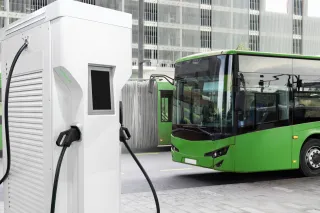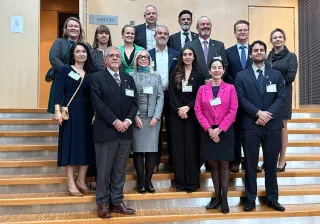During nearly 15 years as a researcher I’ve attended many conferences and presented and listened to countless scientific papers. But I’ve often worried that even though the work is published and peer reviewed it’s easily forgotten and never applied. What excites me about VTT’s Smart eFleet solution is that after 10 years of research, we’re now seeing the urgency of climate change and the imperative of city emissions-cutting targets and it couldn’t be more relevant to today’s needs.
A year ago, I joined the team at VTT in Finland, and as a scientist, I quickly saw the value of the project they had on their table. It wasn’t some ivory tower research disconnected from everyday life. This had the makings of a service-based toolbox solution that could be put straight to good use for city planners now.
Even policy makers have to breathe
To comply with policies at state or regional level, cities everywhere are grappling with air-quality problems, human health and the need to meet low or zero emission requirements. Urban transport authorities are having to reinvent their city transit operation systems. They want to do it with minimum disruption and measurable, compliable results, and we knew we could help.
So, even though there is always a feeling in teams that more research could still be done, science by definition is a work in progress, so we agreed it was time for action. The solution can be generally applied to different transportation sectors, but we decided to first hone in our focus on the simulation-based design of bus electrification and mass-transit projects.
Launching the VTT Smart eFleet Solution
The next challenge was to move this 10-year research project from a marathon into a sprint. That meant accelerating our own efforts to package it into a usable toolbox form.
Now we’re out of the lab and we’ve hit the road running, with hands on projects in cities including Helsinki and Turku in Finland; Santiago in Chile; and Tromsø in Norway. We’ve got good proof of concept from these, showing that our toolbox is able to deal with parameters of any size and regional variables, and conduct projects ranging from simple feasibility studies to passive simulations of complete cities. So far, we’re finding that despite mounting pressure for cities to meet ambitious Paris Agreement mitigation targets, a lot are struggling to make the shift to electrification held back by some basic challenges. For example:
How do we keep the same or better customer service levels?
Maintaining the same level of service and operational reliability that people have come to expect is something our team can help with. This includes issues like keeping the same bus schedule and level of comfort that people are used to, despite the fact that the switch to electrified vehicles is expected to incur more costs, and new factors like charging schedules and times need to be taken into account.
Customer experience is also important. Ideally the transition should take people to a whole new level of comfort while taking a bus. Is it still warm enough or cool enough inside? What about noise levels or emission odours? Will there be entertainment or information systems, or even USB sockets for travelers, amongst many other things?
How are we going to get the best technology at the most affordable price?
The VTT Smart eFleet toolbox has been designed specifically to offer cities the best techno-economic strategy that will maximise value for the whole community. That includes comparing different technology choices, by running different scenarios to assess their impacts on energy use and cost. For example, batteries in electric buses are a very high cost component. Using various open-source elements related to things like topography and route length, the tool can provide insights into finding the right battery size that will maximise energy efficiency but not at the expense of serviceability. An undersized battery might be cheaper but not able to withstand the powertrain in an area with high hills.
How do we find an innovation partner that’s commercially independent?
As public entities, cities need innovation and development partners that can offer visionary research while still being commercially agnostic. At VTT our independence is our strength. Just as science itself should be objective, VTT makes a point of always positioning itself as independent and impartial. As a research organization it’s part of our mission of promoting the wide-ranging use of all our research and technology across industry, business and society.
Science not just for scientists but for society
In Bulgaria, growing up, both my parents were engineers and both hoped that I would become an engineer too. For them science was not just for scientists but for all the society. It was about bringing evidence-based solutions to life to solve real problems. Our home was in Plovdiv, Bulgaria’s second largest city, which was in year 2019 named “The cultural capital of Europe”. The city attracts a lot of visitors in the summer but unfortunately, since I was a kid, the temperature there has become dangerously hot, with many days up to 40 degrees Celsius. When I see climate change first hand it makes me sad but at the same time I feel inspired by our project to bring big and lasting impacts to cities around the world, including my own.




